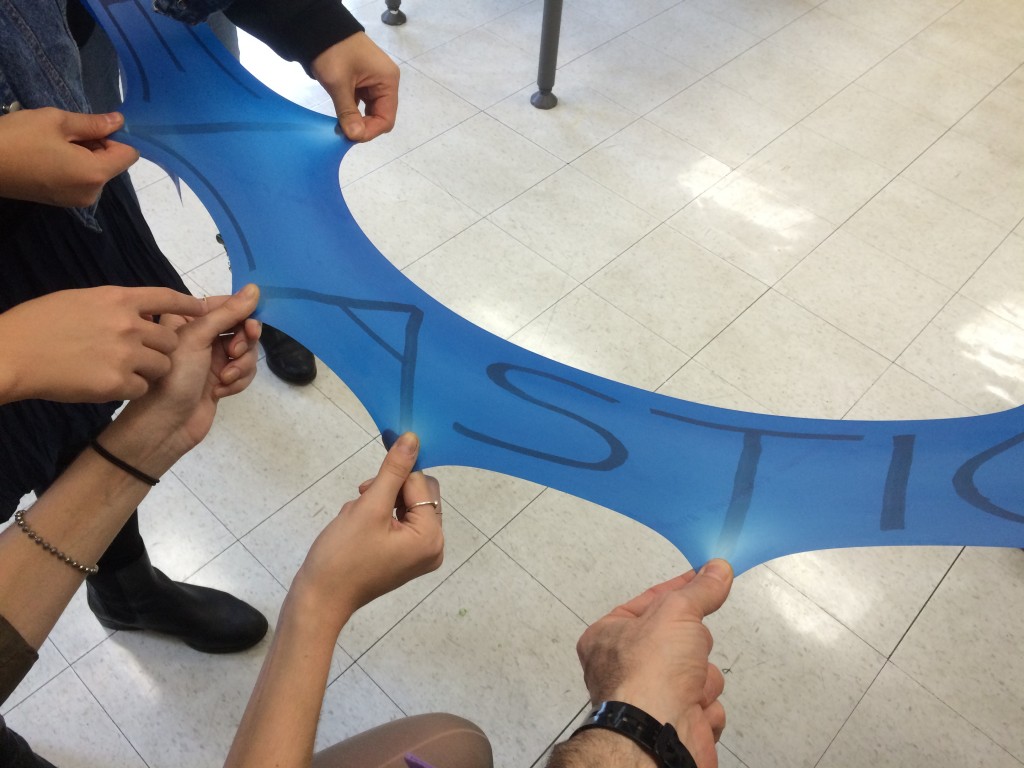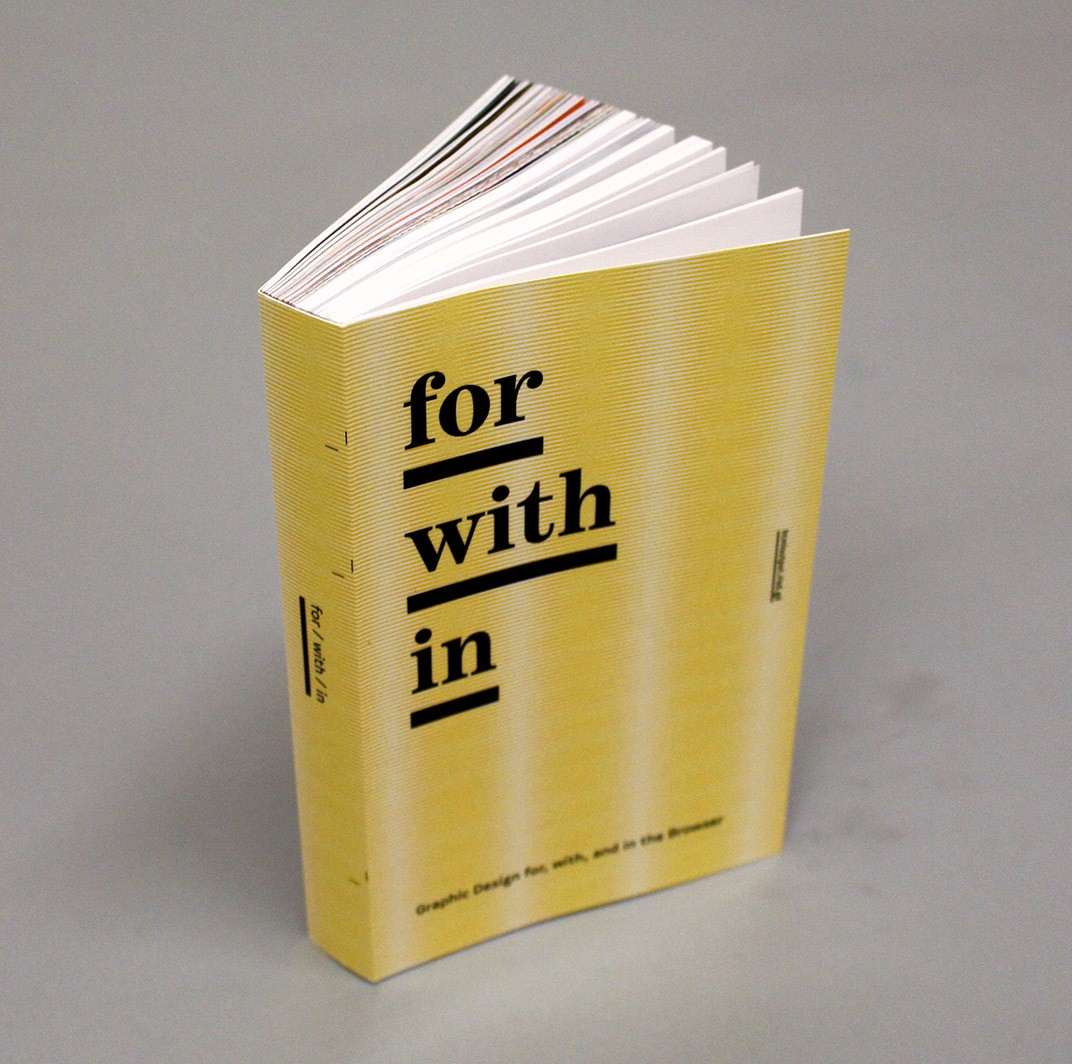I entered the RISD Graphic Department in 2012, at the tail end of a thorough external review. The reviewers offered valid insights and criticisms for the faculty to consider. As a response, I volunteered to research curricular and pedagogical routes that were the right fit given our value system. A blog and presentation led to an extensive write-up and a series of conversations with faculty, students and alumni in the semester that followed. A committee of Department pedagogues met regularly to tighten up the details. The culminating document presented to the dean, the Curriculum Committee, and ultimately to all RISD faculty, proposed inquiry-based core studios, elective four-week tools workshops, and a more expressive and rigorous type sequence. Given Nancy Skolos’ ascension to dean in the aftermath of John Maeda’s unexpected resignation, I offered to administer the changes as department head — a position I held until December 31, 2016.
The curricular work — which is ongoing — has been well received internally and externally. We have benefitted from better scheduling and sequencing of core courses, like History of Graphic Design, Color and Type III. The new studio, Design Studio, has allowed for open experimentation in both content and pedagogy. Discrete units from this course have been made from, and broadened into, full length electives. The 1-credit workshop series has been adopted by other departments at RISD. These changes have been made without breaking any part-time faculty contracts, and by encouraging full-time faculty to engage more deeply in their research interests.
More info
- Read the report, written with Lucinda Hitchcock
- Hear an interview with myself and Lucinda Hitchcock about the curriculum
- Read AIGA Eye on Design’s profile of RISD GD
Design Studio
The core studio — proposed in 2014 and began that fall — is a series of two 3-credit classes in sophomore year and two 6-credit classes in junior year, would run across four semesters. The objective of the four-semester Design Studio sequence is to build discipline and self-reliance around research, to allow space for asking questions, finding precedents, forming groups, learning skills, working with a wide variety of faculty, and shaping what students have learned into contemporary forms while addressing relevant and contemporary questions (problems). Faculty teams offer prompts and resources to create the framework of the design problem, and the students will choose the medium and formats appropriate to the line of search, inquiry, problem being solved, and so on. All 65+ students work on one faculty member’s unit. This format elicits faculty collaboration and peer support through weekly pre-class meetings that tighten language and cover possible teaching strategies for the unit.


Design Studio is a nimble, agile structure that can handle the many changes in our profession, allowing for better cross-pollination between new faculty and senior faculty, and will touch on current topics, methods and cultural phenomena. Staffing the courses was a pleasure, placing new adjunct faculty into a team where they could introduce their line of inquiry to the faculty and students. Senior faculty support newcomers and newcomers offer new thinking to senior faculty. As new tools, theories and cultural issues arise, the course can adapt itself through the introduction of new topics and/or people.

Course description
Graphic design occupies an ever-expanding, ever-redefined territory at the intersection of verbal and visual languages. Its media spans everything from websites to postcards, film to signage, typefaces to billboards. Its methods make use of both sides of the brain: pairing logic, critical analysis, research, and planning with intuitive search, mark-making and visual expression. Graphic designers are inquirers, observers, poets, editors, curators, analysts, researchers, commentators, and critics.
Rather than attempt to codify this expansive landscape, or to delineate a sequential path through it, this course takes this ambiguity as license for experimentation, discovery, and play. You will encounter and engage the tools, materials, and processes of graphic design in functional context, as means to self-directed ends.
The emphasis will be on methodologies of making — observation, analysis, ideation, translation, curation, research — and on developing a personal voice and approach.
Design Studio will take the form of a series of question-based units, each initiated by a faculty member and contextualized by a presentation, event, or workshop. Units may span the entire term, a few weeks, or a single class period. Design Studio is a fast-paced course that necessitates a self-directed, open-ended, experimental and playful mindset. Units will not define outcomes or prescribe processes, but rather will aim to inspire lines of enquiry, challenging students to explore unfamiliar subject matter, tools, media, and processes by their own initiative.
The new curriculum has led to widespread and visible discussion within the field of design education. This includes a few podcasts, press online, published writing by myself, public discussions on design curriculum and consulting work with on my part with CCA in San Francisco and LAU in Bierut.
More on Design Studio
- See website for Design Studio 1, 2016
- See website for Design Studio, 2015-17
- See website for Design Studio, 2014-16
- Read the Design Studio Teaching Guide
1-credit tools workshops
The Friday 1-credit workshops focus on the tools and craft of design. They are guided hands-on making sessions that provide enough training, community and resources so students may continue working on their own with that tool afterwards. Although there is no one pedagogy that works for all workshops, the term workshop denotes a hands-on approach, where instructor leads students through exercises or tasks in person, thereby setting up assignments that may be reviewed the following week. Workshops put the tool at the center. The workshop should open up conceptual doors by showing students what is possible with a tool. The emphasis should be on training, best practices, looking at precedents, experimentation, and building a community around a tool (whether physical or digital). It is not just the how of a tool, but the why and what’s possible.
Learning Objectives
- To build skill and craft around a specific tool in design
- To build communities of students and faculty around certain ways (and places) of making
- To serve larger number of students who want access to skills
- To complement the more open format of Design Studio, where specific formats are not emphasized
- To mingle different age groups, experience levels and majors
Research electives
While Department Head, I added more than a dozen new electives. The electives got into more details than the required courses, looking at specific disciplines or working methods. Many of the upper-level electives had a publishing component built into them, placing the work that happens in the classroom beyond the educational ‘white cube’ into the larger discourse. These research electives engage design methods and forms beyond those that exist in professional practice. This has turned out to be a real boon for our graduate students as well. Chris Novello’s Computer Utopias, Christopher and Kathleen Sleboda’s Newly Formed, Jiminie Ha’s Design and the Gallery, Paul Soulellis’ Experimental Publishing Studio, my HTML Output course and Lucinda Hitchcock’s Shaping Language, arose from ongoing discussions with the instructors around their interests and how the class setting could be a place to further their ideas. Through my encouragement, these courses have built research into their learning objectives — making the classroom an ideal place to support faculty and to determine the future of our profession.





